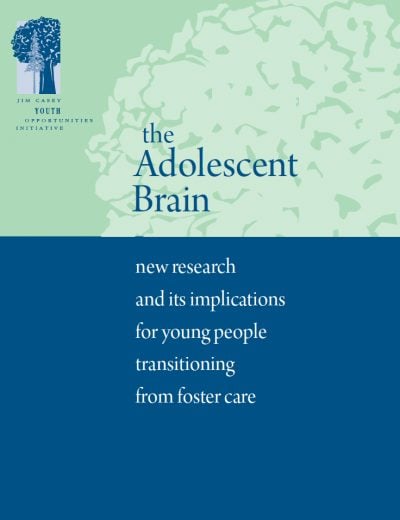Becoming an Adult
Conventional wisdom — and now science — tells us that young people do not automatically and abruptly turn into full-fledged adults in their late teens.

In the last decade, scientists have identified a period of prolonged — and vital — brain development in adolescence. Learn what the experts now know, and what child welfare workers need to know, about applying these findings to youths in foster care. Now, neuroscience reveals that the brain experiences of major development during adolescence that is comparable to early childhood. Young people in foster care often lack the supports needed to become healthy, connected and productive adults. Positive youth development services, opportunities and supports are essential in promoting healthy brain and social development in adolescence.
Learn what the experts now know about adolescence and brain development, and what child welfare workers need to know about applying these findings to youths in foster care.
An executive summary of this report also is availabe.
Adolescence is a period of “use it or lose it” in brain development. Foster care systems must learn how to "use it" if they are going to be successful in preparing children for adult life.
The science of adolescent brain development tackles some sobering topics, from talk of lost neurons to the lingering impact of complex trauma. But, it also supports one raw and very real fact: During a foster child’s long road to adulthood, a loving, supportive, lasting relationship with one person — just one person — can work wonders (and not just on the brain, but the heart and soul, too).
The brain’s frontal lobes—especially the prefrontal cortex, which governs reasoning, decision making, judgment, and impulse control—are the last parts to reach full development in adolescents. Beginning in puberty, the frontal lobes undergo dramatic changes, which become increasingly evident throughout adolescence. Adolescents and young adults begin to rely less on the limbic system—the emotional center of the brain—in making decisions and more on the frontal lobes, the seat of judgment and impulse control.
Adolescents in foster care often have the deck stacked against them from the start. Research suggests that they have significant behavioral, emotional or developmental needs. They are also more likely to be placed in a group or institutional setting and less likely to be adopted or establish a lasting connection to a person relative to their younger counterparts.
The goal for young people with foster care experiences, like all other youth, is to be successfully connected by 25. This report contains five recommendations for foster care based on adolescent brain development research: